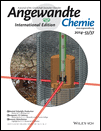Ultra-Low-Field NMR Relaxation and Diffusion Measurements Using an Optical Magnetometer†
This work was supported by the Director, Office of Science, Office of Basic Energy Sciences, Materials Sciences and Engineering Division, of the U.S. Department of Energy under Contract DE-AC02-05CH11231 (instrument fabrication and salaries for P.J.G., H.D.S., S.J.S. and A.P.) and by the Innovation Grant Program of Lawrence Berkeley National Labs under U.S. Department of Energy Contract No. DE-AC02-05CH11231 (salary for SJS). This work is a partial contribution of NIST, an agency of the US government, and is not subject to copyright in the United States.
Graphical Abstract
Portable NMR: NMR relaxometry and diffusometry can be highly effective in applications where high-resolution NMR spectroscopy is unnecessary or impractical, as is the case in the emerging field of portable chemical characterization. A proof-of-concept experiment is presented that demonstrates the use of high-sensitivity optical magnetometers as detectors for ultra-low-field NMR relaxation and diffusion measurements.
Abstract
Nuclear magnetic resonance (NMR) relaxometry and diffusometry are important tools for the characterization of heterogeneous materials and porous media, with applications including medical imaging, food characterization and oil-well logging. These methods can be extremely effective in applications where high-resolution NMR is either unnecessary, impractical, or both, as is the case in the emerging field of portable chemical characterization. Here, we present a proof-of-concept experiment demonstrating the use of high-sensitivity optical magnetometers as detectors for ultra-low-field NMR relaxation and diffusion measurements.





